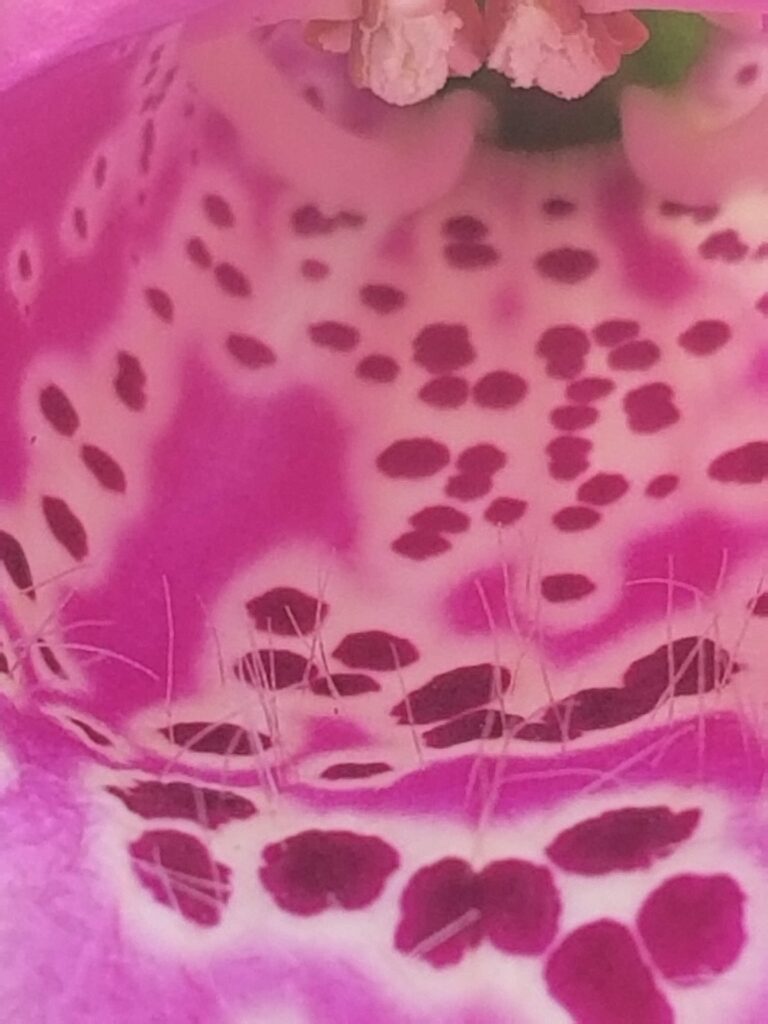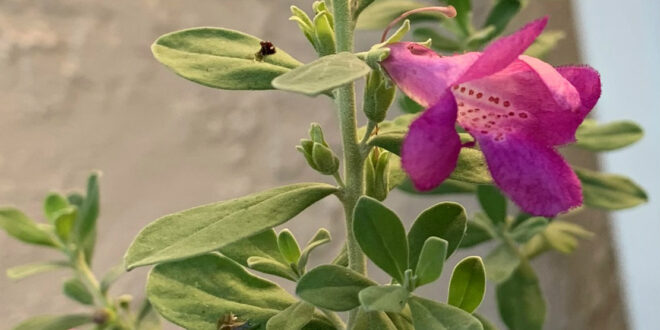Our Sunnyvale garden has many drought-tolerant plants such as succulents, lavenders, and salvias. Texas Sage ‘Green Cloud’ is a recent purchase from Yamagami Nursery in West San Jose.
Texas Sage (Leucophyllum fruitescens) has many common names, including Texas ranger, Texas rain sage, barometer bush, cenizo, silverleaf, and ash-leaf. The plant is not a sage (Salvia ssp.) but it is native to southern Texas and northern Mexico. The names Texas rain sage and barometer bush come from the fact that the plant often blooms immediately following rain. Cenizo means ash colored, which describes the leaves, as do the names silverleaf and ash-leaf. Leucophyllum means having white leaves and frutescens means shrubby. This is entirely accurate, for this is a shrubby plant with whitish leaves.
Texas sage are medium-sized shrubs, typically to 8 feet tall and wide. They are covered with small gray or gray-green leaves. Plants are usually evergreen but some cultivars may go deciduous during the coldest winters. The flowers are usually less than an inch wide but are so abundant in number that they put on a beautiful show of purple, pink, or white blooms. Blooming is from summer into fall and usually quickly follows rain or even high humidity. Each bloom cycle is short but plants can bloom repeatedly.
All in the Family
Texas sage are in the Snapdragon Family (Scrophulariaceae). The family is characterized by bisexual flowers with tubular corollas (fused petals) that are bilaterally symmetrical (two-lipped) and have four stamens in most, two of which are usually shorter than the other two. The pistil is superior (i.e., positioned above the attachment point of the other flower parts) and usually two-celled. The photo below is a Foxglove but looks like the flower on the Texas Sage!

Texas rangers are recommended for USDA zones 8-11 or Sunset western zones 7-24, H1, and H2, though blooming is not reliable where the summers are not hot. This plant is widely used in the desert cities of the American southwest. However, this is not a plant whose use needs to be restricted to the southwest or the classic desert. Dave’s Garden members have had success with this plant in Alabama, Arizona, Arkansas, California, Florida, Nevada, New Mexico, North Carolina, Puerto Rico, and of course Texas. In desert climates, the shrubs can be planted at any time of year.
Plants should be grown in full sun, in well-draining soil, and with little to moderate water. Over-watered plants will die out and under-watered plants will drop many leaves and look scraggly. The species is tolerant of alkaline soils, heat, and wind. The shrubs can be trimmed as a formal hedge but are reported to be healthier if left in a more natural growth form. From an aesthetic standpoint, the less pruning, the better. An occasional heavy annual pruning, if necessary, is acceptable and old, leggy plants can be rejuvenated by cutting them back almost to the ground. If space is an issue, it is better to grow one of the smaller cultivars than to keep trimming a larger plant.








